20 Bad Habits That Are Putting Your Home at Risk of a Fire (Guide)
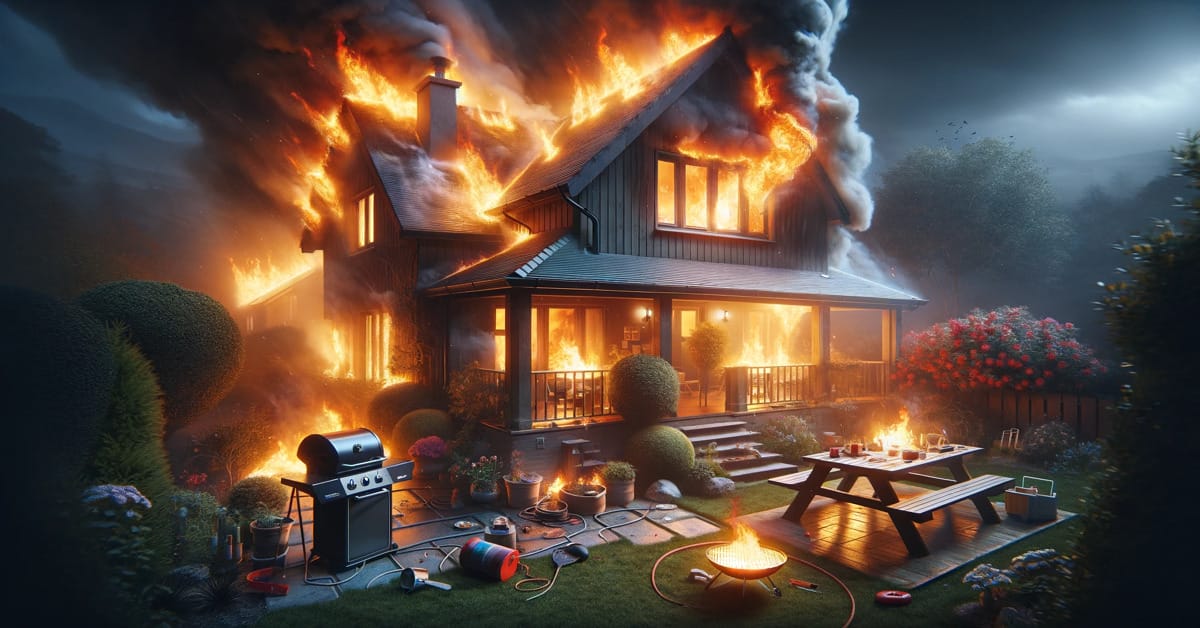
Hey there, homeowners! It’s time to tackle a topic closer to home than you might think. We’re talking about house fires – a real threat that often lurks in the shadows of our daily routines.
Here are some little things we barely notice that are culprits behind a potential blaze:
🔥 Letting Your Laptop Overheat
🐭 Ignoring Uninvited Guests
🛏️ Misusing Electric Blankets
🪑 Poor Furniture Arrangement
🏠 Skipping Chimney Cleaning
👇 More Below…
In this article, we’ll reveal 20 bad habits that, when corrected, can help you prevent a fire from starting in your home. These seem harmless necessities, but they’re potential fire starters hiding in plain sight.
1. Forgetting to Clean Out Dryer Lint

Let’s admit it: we’re all guilty of occasionally forgetting to clear the dryer lint. But did you know that this simple oversight can have fiery consequences?
Lint is flammable, and excessive heat could turn your dryer into a potential fire starter. If you’re not in the habit of cleaning your lint screen after each load, it’s high time you started.
Making your dryer’s surrounding area a clutter-free zone is another step in heading off disaster. When you pile up flammable items near your dryer, you cause trouble.
And while we’re on this, certain clothes come with instructions like “dry away from heat.” Check for these labels and adhere to them.
Almost 27% of the estimated 13,820 home fires caused by clothes dryers yearly are due to accumulated lint. In context, that’s over 3,700 fires ignited by something as innocuous as dryer lint.
If you find this task daunting, consider hiring professionals to clean the dryer vents every two years. Trust me, it’s money well spent.
2. Ignoring or Putting Off Appliance Recalls
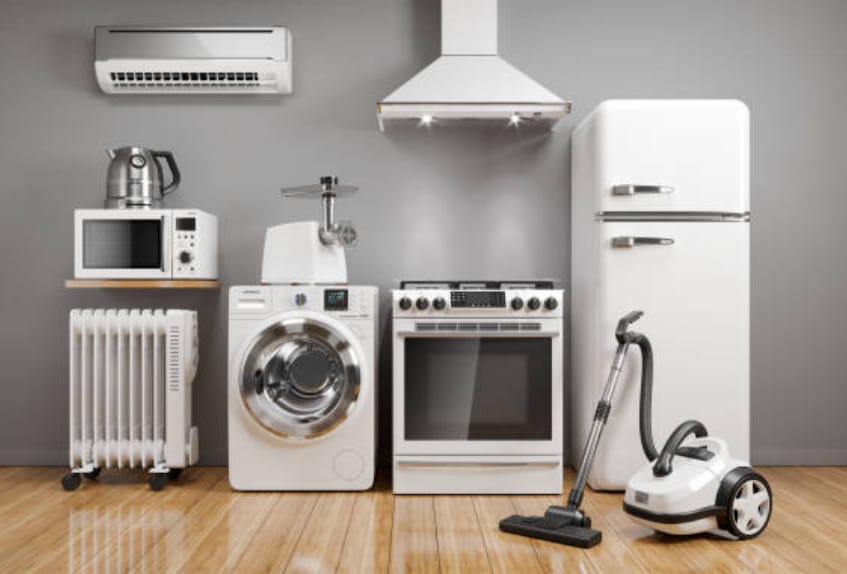
You know what’s also notoriously overlooked, just like dryer lint? Appliance recalls.
It’s distressing to find out that failing to keep up with appliance recalls can also lead to fires. You wouldn’t want to figure it out the hard way, so watching for these issues is crucial.
Year after year, many house fires are reported to be caused by defective appliances. It’s not just hearsay. The last decade has seen an estimated 150,000 fires each year linked to malfunctioning home appliances—an alarming figure by any measure.
You may ask, how do I stay in the know about recalls? There are several ways you can do this. For one, when purchasing new appliances, remember to register them with the manufacturer.
3. Overlooking Your Stove’s Range Hood
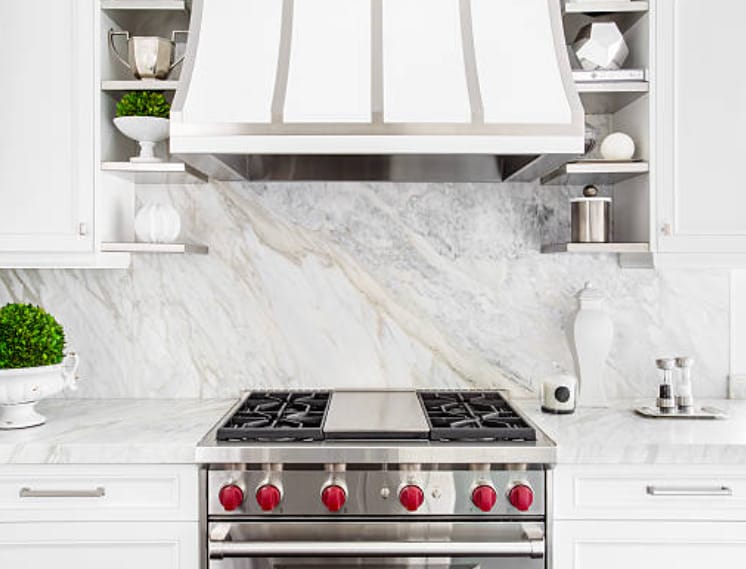
We often focus on ovens and stoves when discussing appliances and fire hazards. But it’s time to shed light on another kitchen essential that’s often overlooked: the range hood.
Over time, grease accumulates on the vent hood filter. If unchecked, this grease buildup can start to drip onto the cooktop. Here, it might just ignite a fire. Within moments, those greedy flames could spread to your cabinets; before you know it, your kitchen could be an inferno.
To prevent such a disastrous scenario, what should you do? It’s simple: regular cleaning and maintenance of your range hood are key.
By ensuring that your kitchen is clean and safe, you’re stepping up your efforts to protect your home and loved ones.
Safety is a habit. The more of these habits you build, the safer your home becomes. Every home, every kitchen, deserves to be safe. Yours is no exception.
4. Improperly Storing Batteries
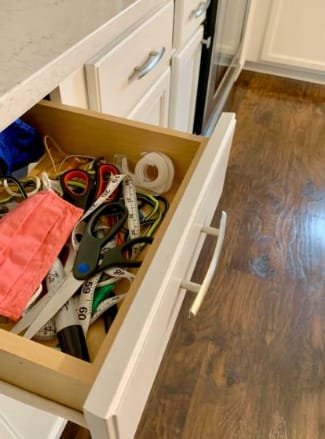
One often overlooked hazard in most homes is the improper storage of batteries. We all have that junk drawer filled with random objects – paper clips, screws, and, yes, those seemingly harmless batteries. You may not know this common storage practice can become a dangerous fire hazard.
Loose batteries rolling around in a drawer can easily mingle with metal objects. This can cause the battery terminals to short out, generating enough heat to ignite other flammables in the drawer.
So, how do you prevent this? It’s simple: start by storing your batteries responsibly. If you’ve thrown away the original packaging, don’t worry. You can place some electrical tape over the battery terminals.
This simple step can prevent your stored batteries from short-circuiting and becoming mini heat generators.
5. Choosing the Wrong Lightbulb Wattage
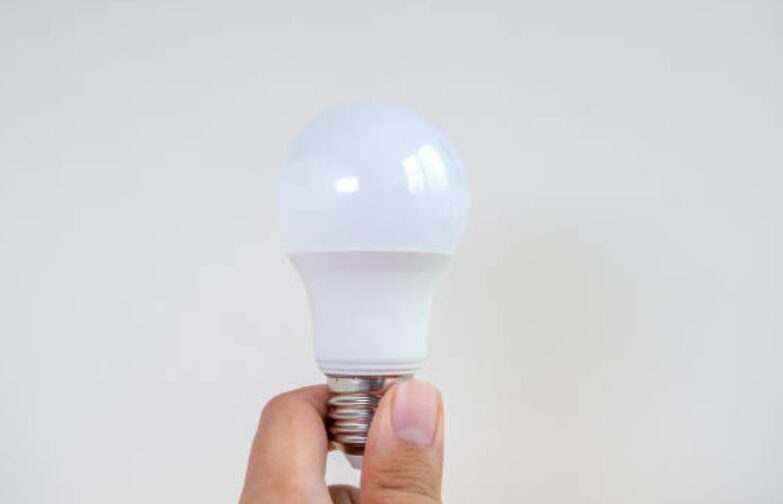
Here’s a scenario you might find all too familiar. You’re standing in your local hardware store, staring bewildered at a wall of lightbulbs. I get it; it’s tempting to think, “Hey, it’s probably OK to use this 60-watt bulb in a 40-watt socket.”
You’re not alone in this, but here’s the fact: installing a lightbulb with a wattage that is too high for a lamp or fixture is one of the leading causes of electrical fires.
So, how can you prevent your light fixtures from becoming a fiery hazard? Always make it a habit to check the light fixture’s maximum wattage. Despite the appeal of bright, powerful lights, you must never exceed the recommended rating.
Beyond lampshades and aesthetic designs, lightbulbs can be fire hazards if not handled properly. It’s crucial to remember that you should only use bulbs with a wattage equal to or less than the manufacturer’s recommendation. The label on the fixture will tell you what wattage bulb you should purchase.
6. Using Too Many Extension Cords

Now, let’s address another common habit: the improper use of extension cords. Yeah, you’ve heard it right – extension cords can be fire hazards, too, if you’re not careful and responsible enough to use them properly. It’s been noted as one of the main culprits for home fires.
You see, extension cords are designed for temporary power supply. They aren’t intended for long-term use, and making them a permanent fixture in your home is not a good idea.
Overloading extension cords with several appliances increases the risk of power overload and, eventually, a short circuit. Hold that thought: a short circuit can cause a house fire you’d not want to deal with.
Reach out to a licensed electrician to install more outlets in your home. It might require a bit of investment upfront, but remember, it’s always better to be safe than sorry.
So, review where and how you use extension cords in your home. Let’s not allow a convenience to turn into a fire hazard. Stay vigilant, folks.
7. Letting Your Laptop Overheat

I’ll be the first to admit I’ve spent countless nights working on my laptop, cozied up on the couch or in bed. But did you know this habit could be a recipe for disaster?
Laptops are notorious for getting hot, especially when they’re stopped from cooling properly. Leaving your laptop on a bed, couch, or rug restricts the airflow through the cooling vents. The heat cannot disperse, leading to overheating, which can potentially cause a fire.
Remember: laptops are designed to dissipate heat efficiently. The problem begins when the natural cooling process is hindered. Placing your laptop on a hard, flat surface allows a clear path for the venting system.
8. Ignoring Your Uninvited Guests
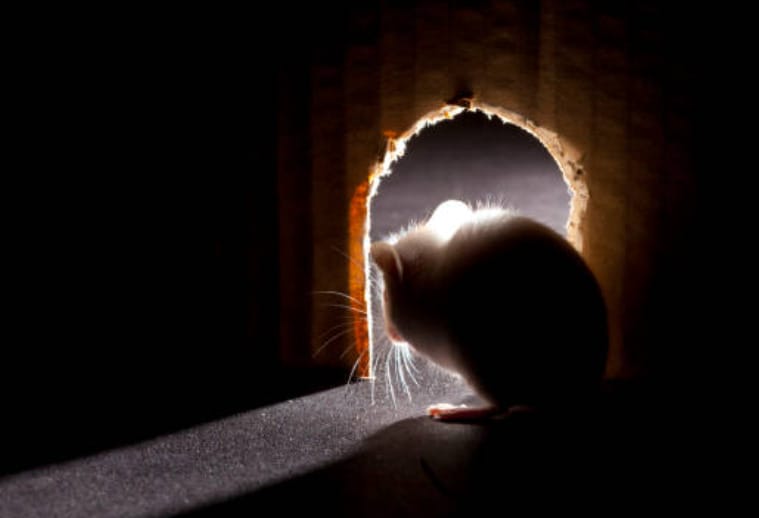
Alright, folks, here’s something you might not usually consider a hazard. We’re talkin’ about your uninvited guests, like those pesky rats. These stowaways don’t just snack on your pantry items – they also love a good nibble on your electrical wiring.
What’s worse is these exposed wires can collect heat over time, and without that protective sheath, they can cause short circuits that may lead to fires. It’s a sight no homeowner wants to face.
So, what can you do about it? Set traps or call an exterminator if you spot a rodent. It’s not the coziest solution, but keeping fires at bay is necessary. You have to make safety a habit, folks.
9. Misusing Your Electric Blanket

Now, here’s a big one that might surprise you. You are misusing your electric blanket. This cozy comfort of winter nights can quickly become a fire hazard if not handled carefully.
Imagine this – the cold season is rolling in full force, and all you seek is warmth. Your go-to solution? That’s right, your trusty electric blanket.
However, inappropriate use of this heating source, coupled with habits like allowing pets on them or piling on additional blankets, can cause a dangerous buildup of heat, leading to unexpected fires.
Make it a habit to turn it off each morning. Remember, folks, an unattended electric blanket is a disaster waiting to happen. Let’s not invite trouble.
Everyone loves a warm and cozy winter night, but let’s keep the heat in control. Adopt these safe practices for your electric blanket to enjoy the warmth without any hazards. This way, you’re taking one more step towards preventing house fires.
10. Arranging Furniture Poorly

Isn’t it incredible how the simplest things can contribute to house fires? Improper furniture placement is a top culprit.
Electron-packed electronic appliances, such as your laptop or gaming console, need personal space, too! If you’re clustering stuff around your electronics, they can’t dissipate heat effectively, making them potential fire hazards.
Don’t underestimate the risk of placing your furniture too close to wood stoves. Heat and time – that’s all it takes! Constant exposure to a heat source like a wood stove can induce pyrolysis in your furniture.
This chemical decomposition can spontaneously ignite objects, such as a couch, without a direct flame. Pyrolysis is a leading yet often overlooked cause of structural fires. It’s something to keep an eye on!
It’s all about being safe, folks! Good furniture arrangement and safe practices can go a long way in keeping your house free from fire hazards. So, let’s start taking these precautions today.
11. Forgetting to Clean the Chimney
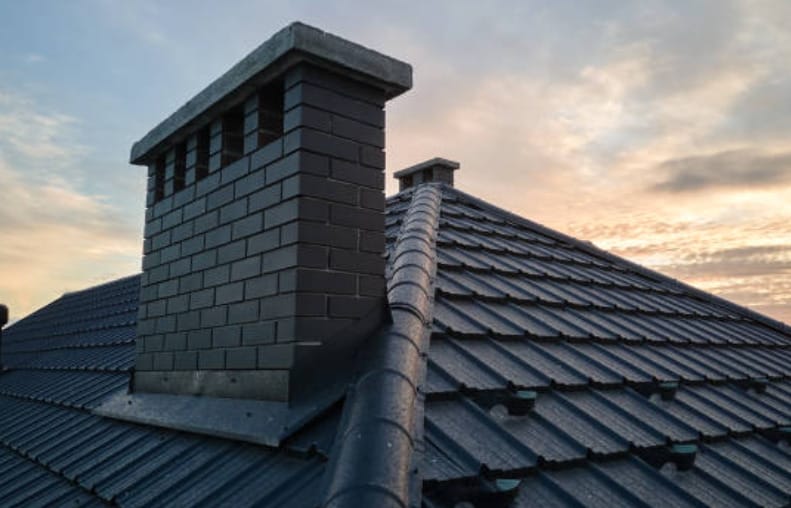
You’re cozying up, and you’ve got a warm fire. But did you remember to clean the chimney? Not doing so can turn your relaxing night into a disaster.
A home’s chimney can become a nest for dried leaves, dead birds, raccoon nests, or the dangerous greasy buildup known as creosote. These potential fire hazards could transform your comfortable abode into a not-so-desirable blazing inferno.
So what can you do? Here’s a golden rule: clean your chimneys at least once a year. Yes, even if you’re not using them often.
According to the National Fire Protection Association, scheduling a professional chimney sweep at least once a year isn’t just a good idea – it’s a recommendation. These experts can clear creosote buildup and ensure your chimney operates safely.
And when you’re building a fire in your fireplace, there’s a temptation to light it up quickly. But here’s a caution: use an approved fire starter, never kerosene. The consequences can be disastrous.
So remember, my friend: Chimney maintenance isn’t a choice; it’s necessary. Save yourself and your home from the potential disaster.
12. Taking on DIYs Meant for Professionals
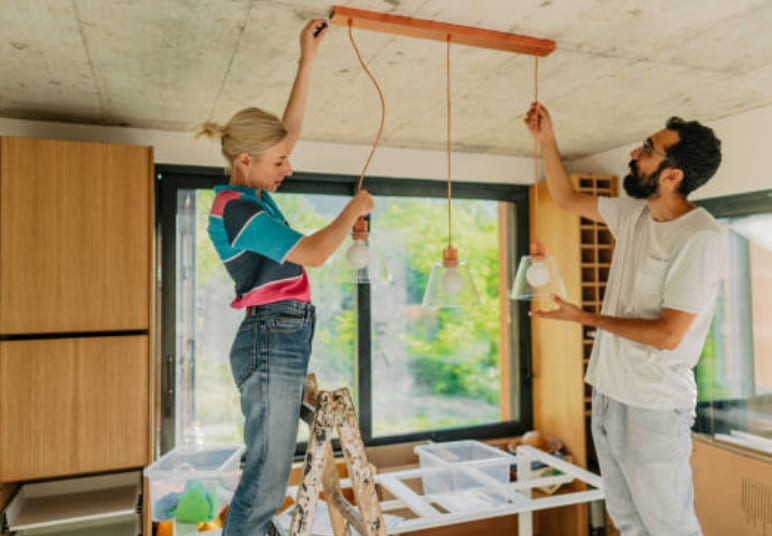
DIY projects may sound like a fun and creative way to spend your time, but they can become serious threats when we delve into areas beyond our expertise.
Improper installation, electrical sparks, and gas leaks are dangerous outcomes we’re flirting with when choosing to go the DIY route without the necessary skills or experience.
Tasks involving intricate systems like electrical wiring, plumbing, and HVAC are not to be taken lightly. Even minor slip-ups, such as gas leaks and electrical sparks, can become dangerous incorrectly. These are among the common causes of house fires.
The fact is that almost a fifth of the $200 billion Americans spend on home improvements every year goes towards DIY projects. But remember, not all DIY ventures are worth the risk. Some tasks are safer and smarter when left to licensed professionals.
No one’s asking you to abandon the DIY spirit. On the contrary, encourage it and make the most of it. Just be wise and know your limits. Keep an eye on those jobs that are best left to the professionals. This little precaution can help keep the worries of house fires at bay while letting you enjoy your home improvement endeavors.
Next up on the list of hazards could be something you’d never suspect. You’ll find out in the next section.
13. Disregarding Dust
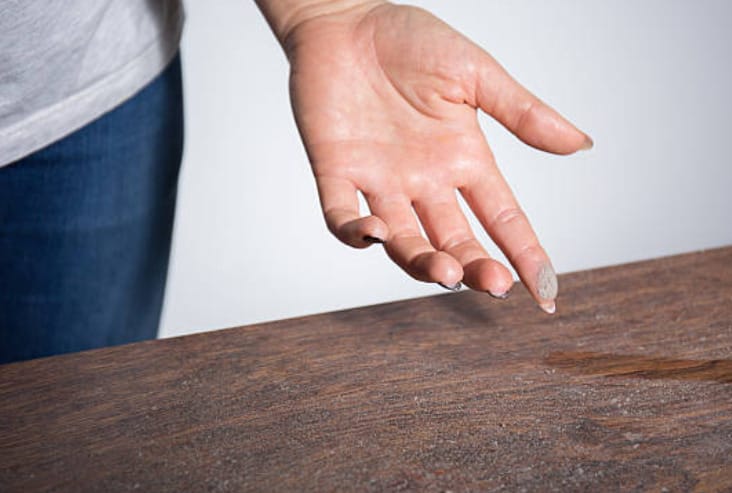
Let’s move on to a seemingly harmless yet risky factor: dust. Yes, you read it right: dust buildup. It might be a surprise, but dust that collects in and around electronics, electrical sockets, and even floor heaters can pose a serious fire hazard.
Why is dust a fire hazard? It’s simple. The accumulated dust in these areas may catch fire due to prolonged exposure to heat. Heat generated from electronics and heaters can ignite the dust particles and cause a fire.
As a homeowner, you mustn’t underestimate the impact of seemingly harmless dust. Here are some steps that might help mitigate the danger.
- Regularly vacuum, especially behind electronics. This reduces dust buildup, thereby lowering the likelihood of a dust fire.
- Closely watch appliances and areas prone to dust accumulation, such as TV wiring and floor heaters.
- Implement a biweekly cleaning routine specifically targeting the often-overlooked dust-prone areas.
Remember: prevention is always better than cure. Your responsibility shouldn’t stop at merely having smoke detectors and fire extinguishers in the house. Still, it should extend to ensure no potential risks like dust buildup become a fire nightmare.
14. Leaving Candles Unattended

The tranquility and warmth that candles add to our homes can be quite mesmerizing. However, an unattended candle is a disaster waiting to happen.
There’s been a 50 percent surge in candle-initiated fires in the last decade. That’s no freak accident; it’s negligence leading to inevitable devastation.
You might think, “I’d never make that mistake,” but let’s get real for a second. It’s easy to get distracted, leave a room, and completely forget about a lit candle.
Or, perhaps you may not notice that your candle is a tad too close to flammable materials. Even a playful pet knocking over the votive could start a household disaster. What started as a calming light could become a towering inferno in mere seconds if left unattended.
Keep them in sight, out of the reach of children and pets, and away from flammables like drapes. Before leaving the room, snuff out your candle completely. It’s simply a matter of being proactive and mindful.
15. Smoking or Vaping Indoors
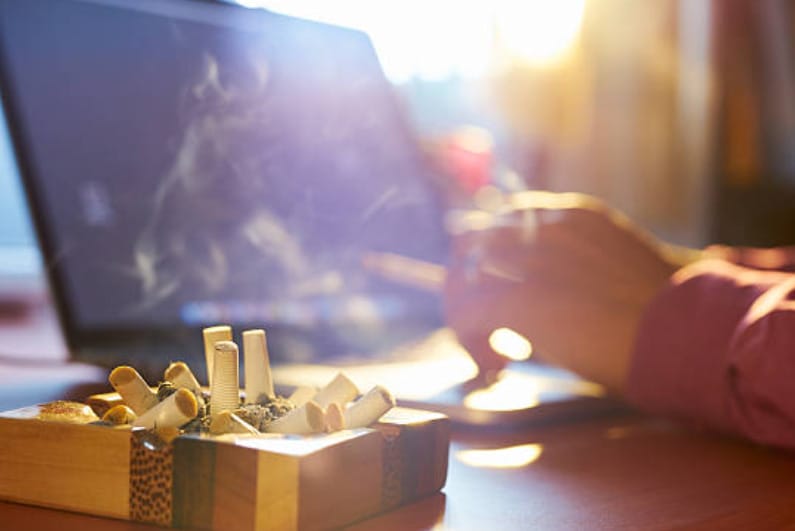
You’d be surprised how often I’ve seen this scenario: a homeowner with good intentions inadvertently introduces a significant fire hazard.
Smoking and vaping indoors can pose a real danger. Every year, thousands of house fires are linked to inappropriate indoor smoking habits.
In 2020 alone, cigarettes, pipes, and other smoking materials sparked around 7,900 home fires. Time and again, it boils down to careless indoor practices.
Embers from an improperly extinguished cigarette can ignite newspapers or other flammable items. A relaxing smoke in bed can quickly turn into a nightmare scenario, with bedding catching ablaze, especially if the smoker falls asleep while puffing.
The same rule applies to e-cigarettes or vaping devices. You might think these modern habits spare you the fire risks, but you’d be wrong. E-cigarettes can explode.
This risk is most often linked to damaged or wet batteries. So, let’s stay safe and be smart about it. If your e-cigarette battery gets wet or damaged, replace it pronto. Better yet, keep loose batteries in a case to avoid them touching metal objects, which can spark a fire.
In the next section, we’ll move on to another horrific yet common fire-starting habit. Stay tuned.
16. Stepping Away From the Stove

A common habit that can put your home at risk is leaving your stove unattended while it’s still on, thinking you’ll have enough time to perform another task.
Understanding that a small flame can escalate into a large fire in less than 30 seconds is essential. Keeping focused on your cooking prevents avoidable kitchen fires.
Do you think you can step away to answer a quick phone call? Or tend to a child’s needs? Unattended cooking only takes a few fleeting moments to cause a disaster. Specifically, frying foods is risky as the oil can swiftly overheat and catch fire.
Next, I’ll discuss how improperly placed heaters add to the fire hazard.
17. Overlooking Loose-Fitting Plugs
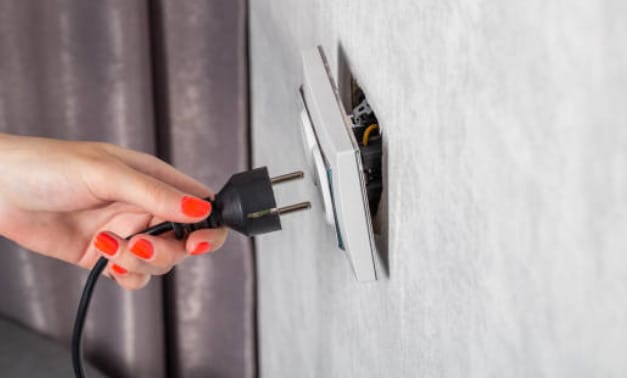
When you find those elusive loose plugs that won’t stay put in your electrical outlets, don’t ignore them. The metal contact points in the receptacle have likely worn down.
They’re not providing a secure connection, and that’s a problem. Continuous use of such outlets could spark a potential house fire. This happens when the current leaps across air gaps – a dangerous phenomenon called arcing.
You don’t want to sit in the middle of an unexpected pyrotechnics show at home, do you? Lay those fears to rest and grab that phone. Dial up a professional electrician to get that dodgy receptacle replaced.
18. Placing Glass Objects in the Sun’s Path
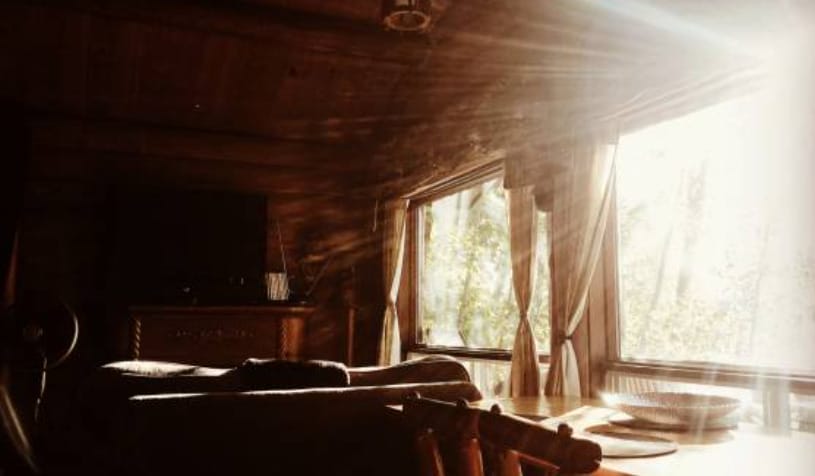
Picture this: a beautiful morning sun streaming into your room, hitting just the right spot on that glass ornament or even an innocuous beer bottle. It seems harmless, right? Well, think again.
Back in March 2021, in Stoneham, Massachusetts, a fire broke out, and guess what was the unexpected instigator? A combination of curved glass, sunlight, and nearby combustible materials.
This is what experts call solar magnification. The curved glass acts like a magnifying lens, intensifying the sun’s rays and focusing them onto a small spot. If this spot is on something flammable, like your couch or a stack of papers, it can heat up to the point of ignition.
So, what can you do to prevent this from happening in your home? First off, take a good look around. Are there any glass objects in places where they get direct sunlight for hours?
These could be decorative items or something as simple as a glass bottle. Relocate them to a safer spot where they won’t play the role of an unintentional fire starter.
19. Leaving Crumbs in the Toaster
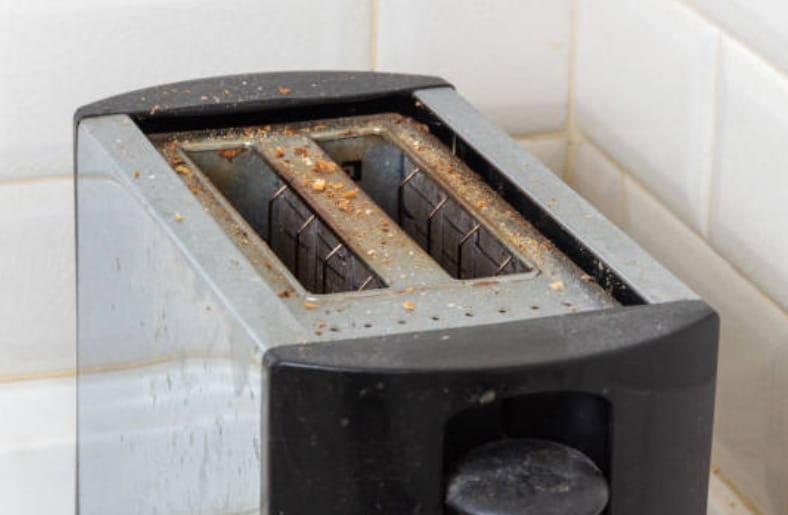
Believe it or not, that innocent toaster on your kitchen counter can become a fire hazard if not cared for properly.
Here’s some food for thought – every time you toast bread or bagels, they shed crumbs that slide into the nether regions of your toaster. No harm, right?
Well, not quite. During the next toasting cycle, those forgotten crumbs could become heated up to the point where they ignite. A toaster lit like a bonfire may cast your whole kitchen in flames.
To overcome this, toast your bread with care. If your toaster has a removable crumb tray, make it a habit to unplug the toaster post-use, let it cool, and clean the crumb tray.
Not only should you empty it, but give it a good wash with warm, soapy water to remove residual crumb buildup. If your toaster doesn’t offer the luxury of a crumb tray, worry not!
You can still beat the odds by unplugging and gently shaking the toaster. This simple jiggle can eliminate most crumbs, reducing the risk associated with crumb ignition.
20. Piling Up Dirty Rags
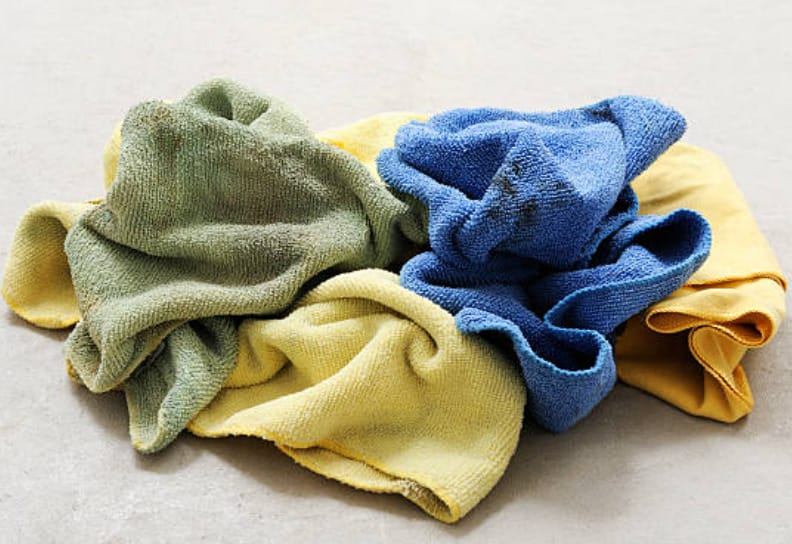
DIY enthusiasts, watch out! If you’re into refurbishing furniture or involved in any activity that results in oil-soaked rags, you’re wading into the dangerous waters of potential fire hazards.
So, have you just finished fixing those kitchen cabinets or waxing your favorite car? Don’t toss those oil-drenched rags in your garage’s corner or heap them carelessly in your workshop. You may be unintentionally setting the stage for a fire.
Overlooked and piled up, these rags can prove a menace by oxidizing and spontaneously combusting, causing a fire. It’s a surprisingly common cause of house fires that’s easy to prevent.
So, before you kick back to celebrate another project’s success, take the time to dispose of those dirty rags properly.
Prevention isn’t a mammoth task here. First and foremost, don’t let these rags accumulate in a pile. Consider laying them flat outside to dry, keeping them far from any potential heat or flame.
Even better, you can use a metal can filled with water as a disposal unit. Toss the rags in, ensuring they’re completely submerged, then secure the lid tightly. This might be a little hassle, but trust me, it’s worth the effort.
Essential Home Maintenance: Keeping Your Home Safe from Fire Hazards
Regular maintenance is the cornerstone of a safe home. Just like you wouldn’t skip an oil change for your car, the same level of care is needed for your home appliances and fire safety equipment. It’s about being proactive, not reactive. Here’s what you need to focus on:
- Smoke Alarms and Fire Extinguishers: Check your smoke alarms monthly by pressing the test button. Replace the batteries at least once a year and the whole unit every 10 years. For fire extinguishers, ensure they’re accessible, the seal is intact, and the pressure gauge shows a full charge. Familiarize yourself with their operation – you won’t have time to read instructions in a fire situation.
- HVAC Systems: Schedule an annual professional inspection and cleaning of your heating, ventilation, and air conditioning system. This isn’t just about efficiency; it’s about safety. Blocked or dirty systems can reduce efficiency and become a fire hazard.
- Dryers: Beyond cleaning the lint filter after each load, inspect and clean the dryer vent and exhaust duct periodically. This task is often overlooked, but lint build-up in these areas is a major fire risk.
- Electrical Check-Up: Keep an eye on your home’s electrical system. Flickering lights, tripped breakers, or unusually warm outlets are signs you need a professional electrician to take a look. Don’t overload circuits with too many appliances, and ensure your home’s wiring is up to current standards.
- Appliance Upkeep: Regularly inspect and maintain major appliances. Refrigerators, dishwashers, ovens, and ranges can all become fire hazards if not properly maintained. Look for frayed cords and signs of overheating, and ensure they’re clean and functioning as they should.
- Chimney and Fireplace: An annual chimney cleaning and inspection is crucial if you have a wood-burning fireplace. Creosote buildup can lead to chimney fires, quickly spreading to the rest of your home.
- Water Heater: Check your water heater at least once a year for leaks and corrosion. Sediment can build up at the bottom, causing inefficiency and potential safety hazards.
- GFCI Outlets: Regularly test Ground Fault Circuit Interrupter (GFCI) outlets by pressing the test button. These are typically found in bathrooms, kitchens, and other wet areas and are designed to protect you from electric shock.
By keeping up with these regular maintenance tasks, you’re not just extending the life of your appliances and systems; you’re taking a significant step towards preventing fires and ensuring the safety of your home and family. Remember, a little effort goes a long way in maintaining a safe and happy home.
References
Organizations:
- National Fire Protection Association (NFPA). https://www.nfpa.org/
- Fire Safety Advice Center. http://fireservice.co.uk/safety
- Electrical Safety Foundation International (ESFI). https://www.esfi.org/
Books:
- “Fire Safety Management Handbook” by Daniel E. Della-Giustina
- “The Home Safety Guide” by Joseph A. Califano Jr.
Website Resources:
- DIY Safety. https://diynetwork.com/how-to/skills-and-know-how/workshops
- American Red Cross Home Fire Safety. https://www.redcross.org/get-help/how-to-prepare-for-emergencies/types-of-emergencies/fire.html
- Safe Kids Worldwide. https://www.safekids.org/
